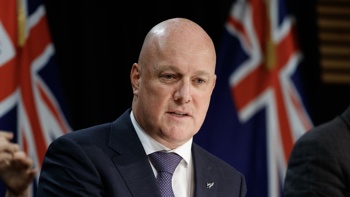UPDATED 5.25pm Around 300 "high-risk" buildings in quake-prone regions will have to be upgraded within a year, the Government announced today.
LISTEN ABOVE: Building and Construction Minister Nick Smith spoke to Larry Williams about the announcement
Using emergency powers introduced after the Kaikoura Earthquake, the Government will require all unreinforced masonry facades and parapets to be fixed within that time frame.
The rules will be limited to regions with a heightened risk of an aftershock following the Kaikoura event - Wellington, Lower Hutt, and Blenheim.
The cost of carrying out the upgrades was estimated to be $20,000 to $30,000 per building, but local councils would subsidise half of the cost. Renovations would also be exempted from resource consent and building consent rules as long as the work was overseen by a qualified engineer.
The Government has established a $3 million fund to cover the cost of the subsidies.
Announcing the policy today, Building and Construction Minister Nick Smith said he had been advised that the Kaikoura quake had significantly increased the seismic risks in Wellington, Lower Hutt and Blenheim over the next three years.
Getting all building owners to secure un-reinforced structures urgently was "the prudent response", he said.
While the costs were high, the renovations significantly reduced the risk of fatalities after a quake.
Smith said 39 people were killed by falling parapets and facades in the Christchurch quake in 2011.
Asked why the subsidies were required, Smith said it was a "pragmatic" response for building owners who will not have had time to save the costs needed for the upgrades.
Smith said they will be checking up to make sure the work is being done within the 12 month timeframe.
"If we require the hard approach of prosecution, yes, we'll use that tool, but we see it very much as a second preference to working cooperatively with these business owners and getting this work done."
The policy stemmed from a report provided by the New Zealand Society for Earthquake Engineers in late December, which highlighted the new risks created by the Kaikoura tremor.
President of the Society for Earthquake Engineering Peter Smith is welcoming the crack down and said there's a real risk involved.
"If we had an earthquake of a different nature with a lot more energy, and high frequency that affects these buildings, we could see a repeat of the Christchurch experience."
Wellington Mayor Justin Lester said public safety has always been paramount since the November earthquake.
"We've said consistently here in Wellington we want to make sure the city is safe. We want to make sure that Wellingtonians feel safe and this is one aspect of the built environment across the city we can improve."
Labour MP Grant Robertson is endorsing the Government's decision and the offer of financial support for building owners, but said it only scratches the surface of the work required to make buildings in the capital safer.
"What I want to see from the Government is some support to bring forward the urgent earthquake strengthening of hundreds of buildings in Wellington that have thousands of people in them every day."
Take your Radio, Podcasts and Music with you









